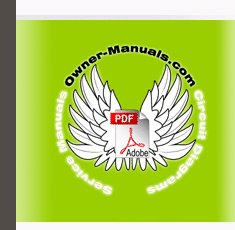|
|
|
Categories
|
|
Information
|
|
Featured Product
|
|
|
 |
|
|
There are currently no product reviews.
 ;
Actually, I was looking for this information for 3 years!...now thanks to you, the manual is on my hands and of great help, cause I understand now where I was doing wrong connections and wires...excellent, I'll be back to you if in need, thank you.
 ;
This manual covers the main equipment features only. While it also includes the procedure for saving and loading from the now long obsolete memory cards it does not mention the how to operate with the optional floppy drive interface so I am still at a loss about how to use this! Note that there is a separate manual covering the MIDI interface and programming via the keyboard, not included in this download. You will also need to get hold of this if you want to use the MIDI interface properly. Basically there is little difference between this manual and the free to download manual for the similar PR60 model.
 ;
Good list of manuals. I found a very rare one and easily get. Should be promptly to download, as we must to wait hours even after confirmed payment.
 ;
The manual was properly scanned and perfectly readable. The only small problem is that I couldn't use my dear Ctrl + F to find a word I needed.
 ;
Nothing wrong with the manual or the delivery - came to me the same day I ordered it. But afterwards I realized that I ordered the wrong manual. Probably better with the Quick start - version. So maybe it would be better if we could see a list with inhold for each manual before ordering?
Additional Hook Up Options
BNC and USB Set Ups
BNC Connections
BNC is another way to connect the monitor to the computer. This connection requires an optional BNC cable. It can be connected to either a Macintosh- or IBM-compatible computer. For those who work with graphics or designs, this option may be better. Note: Be sure to flip the D-SUB/BNC switch to BNC when using this connection. For an IBM-compatible computer: 1. Turn off the computer. 2. Connect the (optional) BNC monitor cable and set D-SUB/BNC switch to BNC. 3. Connect the shielded power cable. 4. Turn on the monitor. Then turn on the computer. 5. If you have Windows �95, follow the �If you have Windows �95� steps on the Setting Up foldout sheet. For a Macintosh-type computer: 1. Connect the Mac adapter to one end of the monitor cable. 2. Turn off the computer. 3. Connect the (optional) BNC monitor cable and set D-SUB/BNC switch to BNC. 4. Connect the shielded power cable. 5. Turn on the monitor. Then turn on the computer. Refer to the �Setting Up your Philips monitor� foldout for a more detailed guide to setting up your monitor.
H/H+V V R G B BNC D-SUB ISD-SUB USB USB USB
D-Sub/BNC Switch
USB Connections
USB (Universal Serial Bus) is an innovation in connecting your IBM-compatible computer to your monitor. By using the USB, you will be able to connect your keyboard, mouse, printer, and other peripherals to your monitor instead of having to connect them to your computer. This will give you greater flexibility in setting up your system. Plus, you will have true plug-and-play capability. While the software is still being developed, Philips has included the hardware so you will be ready to take advantage of this next generation in computer development.
For an IBM-compatible Computer: 1. Turn off the computer. 2. Connect the (optional) USB Hub and cable to the computer and to the monitor. (Computer must have USB port.) 3. Connect the shielded power cable. 4. Turn on the monitor. Then turn on the computer. 5. With the installation of the correct software, you will be able to connect specially-made peripherals to the monitor. Note: USB Hub and cables sold separately. USB Bay exists in back of monitor.
H/H+V
V
R
G
B BNC D-SUB
ISD-SUB
USB
USB USB
USB USB
USB
Refer to the �Setting Up your Philips monitor� foldout for a more detailed guide to setting up your monitor.
16
|
|
 |
> |
|
|
Parse Time: 0.283 - Number of Queries: 104 - Query Time: 0.059
